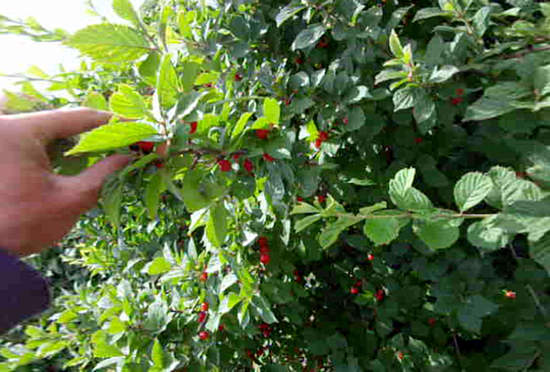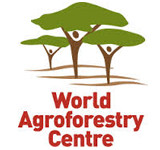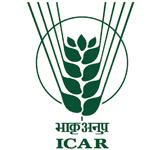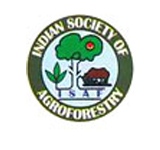
Vigyan Bhavan & Kempinski Ambience
10 - 14 February 2014
Delhi, India
blog

Here in Central Alberta Canada, we live in the Aspen Parkland Biome. This means that our natural ecosystem consists of groves of poplars and spruce trees with a variety of understory perennial shrubs, vines and ground cover species. These clusters of trees would be interspersed with areas of prairie grasslands that were historically home to massive herds of grazing bison.
This biome is extremely resilient, very productive and perfect for our climate. Seeing as this is what our landscape naturally wants to become; why not work with it to achieve its true potential instead of fighting natural succession, expending huge amounts of time and resources in the process! Why not set up a farm that mimics our native biome?
By using the Aspen Parkland Biome as our template we can create a farm that is beyond organic and beyond sustainable. A farm that is regenerative and resilient because it functions as nature intended. What if we swap poplar, birch and box elder for apples, pears, cherries, plums and apricots? Change our native conifers for Korean Pine and we’ve got pine nuts as big as pistachios! Throw in some walnuts, chestnuts and oaks from the Oak Savannah Biome just south of us and we have our canopy species!
The mid story and understory is a little easier as hazelnuts, raspberries, cherries, saskatoons, cranberries, gooseberries and currants are already native here. However, we could add a few extras like mulberries, haskaps/honeyberries and hardy kiwis just to mix things up a bit. As for the ground layer, well we can just stick to strawberries and an incredible variety of medicinal plants that already call this place home! That covers our wooded areas, now what about the interspersed areas of grasslands?
We can simply plant some native grasses and some legumes in between our groves of fruit and nut trees and we are almost done! The last step is integrating animals into our farm system to manage the grassland and contribute to the fertility cycle. Seeing as bison are a little hard to manage and the fact we already have cattle, pigs and some chickens why not let them roam around keeping the trees and lush grass in check! Now add in all the native birds, amphibians, reptiles, insects and mammals that are desperately looking for a place to call their own, and there you have it! A farm cleverly disguised as a thriving ecosystem.
But how do we harvest these 25 plus edible trees, shrubs and perennials along with the hundreds of other culinary and medicinal herbs that would undoubtedly love to call this place home? Well by dividing our summer growing season, from about June to October, into 3 harvest periods per month we would get a total of 15 harvest times. Then, by simply grouping all of our desired edible crops into one or possibly two of these harvest periods our harvesting suddenly becomes less daunting and incredibly efficient.
Now, if we dig a shallow swale that follows the natural contour or Keyline of the land we can plant our trees, shrubs and perennials on the lower side of these swales. This will allow any and all water that falls on the landscape to be be spread out evenly and absorbed into the ground above the plant’s roots. Then, as the subsurface water plumes towards the awaiting roots it will be safe from the evaporative effects of the Sun! Plant these rows in pairs at regular intervals across the land, fence them off and bring in the animals! This farm is ready to roll!
So there you have it, a farm that can create and manage its own fertility, build soil, passively manage water and sequester carbon all while provide carbohydrates, proteins and oils for human or animal consumption, fruits that contain hundreds of nutraceutical properties, trees for timber, fuel and forage among many, many other things! We already have two small examples of this systems on our farm near Ferintosh, Alberta.
With over 80 fruit and nut trees and 200 plus support plants in the ground, it covers just over one acre. In the summer of 2014 we have plans to expand this to a larger 25 acre parcel. This expansion is going to be in partnership with our local community in the form of Community Supported Agriculture Forest Garden Shares. By working with our community we are adding a whole other level of diversity and resilience to our plan that we feel will get people back on the land to actually see where there food comes from. For more information about our farm and to see a video we made about our vision. Just visit our website GrassRootsFamilyFarm.ca, it should help you get a better picture of how it will all come together.
There is a Greek Proverb that reads “societies become great when old men and women plant trees who’s shade they know they will never enjoy”. I believe this adage is extremely relevant given our current state of affairs on our planet. Our current Agricultural system is largely responsible for the degradation of our Air, Soil, Water and diversity. We are literally eating our planet to death, but this doesn’t have to be the case!
By paying attention to our local biomes around the world we can tailor our farming practices to flow with the natural patterns that best suit the land were we live. Many people all around the world have been practicing this new kind of farming for years now! People like Martin Crawford, Mark Shepard, Sepp Holzer, Geoff Lawton, Bill Molison, Stefan Sobkowiak and many other greats! They all saw that Mother nature is here ready to help, and they all reached out and took her hand!
These kinds of natural farms will take years to establish but once in production it will provide nourishment for decades and with a little care even longer! Now is the time to start implementing farms like this en mass. Just think, some day our children’s children will have a place to sit in the shade and marvel at this wondrous world we call home.
Photo: Cherries in the Forest Garden
Blogpost and photo by Takota Coen – Grass Roots Family Farm (Alberta, Canada) – takota_coen(at)live.com
|
This post is entry nr #12 in our #WCA2014 blog competition. The five blogposts with the most and highest votes will receive a signed copy of the book "Trees for Life". The most popular blogpost will get an iPad.
This blogpost received 18 votes, with an average score of 5 (out of a max of 5).
Follow our #WCA2014 social reporting teamfollow our social reporting team via the #WCA2014 tag on Twitter, our blog and our Facebook page.
|






2 People have left comments on this post
Hi Takota , Thanks for a great and very informative blog.
Good understanding of local condition and good plan for sustainable agroforestry. will keep in touch